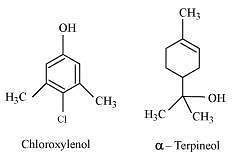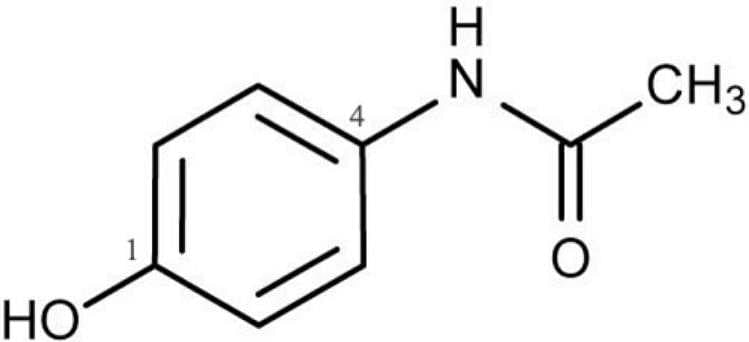NEET Exam > NEET Tests > Chemistry 31 Years NEET Chapterwise Solved Papers > 31 Year NEET Previous Year Questions: Chemistry in Everyday Life (Old NCERT) - NEET MCQ
31 Year NEET Previous Year Questions: Chemistry in Everyday Life (Old NCERT) - NEET MCQ
Test Description
10 Questions MCQ Test Chemistry 31 Years NEET Chapterwise Solved Papers - 31 Year NEET Previous Year Questions: Chemistry in Everyday Life (Old NCERT)
31 Year NEET Previous Year Questions: Chemistry in Everyday Life (Old NCERT) for NEET 2024 is part of Chemistry 31 Years NEET Chapterwise Solved Papers preparation. The 31 Year NEET Previous Year Questions: Chemistry in Everyday Life (Old NCERT) questions and answers have been
prepared according to the NEET exam syllabus.The 31 Year NEET Previous Year Questions: Chemistry in Everyday Life (Old NCERT) MCQs are made for NEET 2024 Exam. Find important
definitions, questions, notes, meanings, examples, exercises, MCQs and online tests for 31 Year NEET Previous Year Questions: Chemistry in Everyday Life (Old NCERT) below.
Solutions of 31 Year NEET Previous Year Questions: Chemistry in Everyday Life (Old NCERT) questions in English are available as part of our Chemistry 31 Years NEET Chapterwise Solved Papers for NEET & 31 Year NEET Previous Year Questions: Chemistry in Everyday Life (Old NCERT) solutions in
Hindi for Chemistry 31 Years NEET Chapterwise Solved Papers course. Download more important topics, notes, lectures and mock
test series for NEET Exam by signing up for free. Attempt 31 Year NEET Previous Year Questions: Chemistry in Everyday Life (Old NCERT) | 10 questions in 22 minutes | Mock test for NEET preparation | Free important questions MCQ to study Chemistry 31 Years NEET Chapterwise Solved Papers for NEET Exam | Download free PDF with solutions
31 Year NEET Previous Year Questions: Chemistry in Everyday Life (Old NCERT) - Question 1
Commonly used antiseptic 'Dettol' is a mixture of [1996]
Detailed Solution for 31 Year NEET Previous Year Questions: Chemistry in Everyday Life (Old NCERT) - Question 1
31 Year NEET Previous Year Questions: Chemistry in Everyday Life (Old NCERT) - Question 2
Which one of the following can possibly be used as an analgesic without causing addiction and mood modification? [1997]
Detailed Solution for 31 Year NEET Previous Year Questions: Chemistry in Everyday Life (Old NCERT) - Question 2
| 1 Crore+ students have signed up on EduRev. Have you? Download the App |
31 Year NEET Previous Year Questions: Chemistry in Everyday Life (Old NCERT) - Question 3
Which of the following is water-soluble? [2007]
Detailed Solution for 31 Year NEET Previous Year Questions: Chemistry in Everyday Life (Old NCERT) - Question 3
31 Year NEET Previous Year Questions: Chemistry in Everyday Life (Old NCERT) - Question 4
Which one of the following is employed as a tranquilizer? [2009]
Detailed Solution for 31 Year NEET Previous Year Questions: Chemistry in Everyday Life (Old NCERT) - Question 4
31 Year NEET Previous Year Questions: Chemistry in Everyday Life (Old NCERT) - Question 5
Which one of the following is employed as a tranquilizer drug? [2010]
Detailed Solution for 31 Year NEET Previous Year Questions: Chemistry in Everyday Life (Old NCERT) - Question 5
31 Year NEET Previous Year Questions: Chemistry in Everyday Life (Old NCERT) - Question 6
Which one of the following is employed as Antihistamine? [2011]
Detailed Solution for 31 Year NEET Previous Year Questions: Chemistry in Everyday Life (Old NCERT) - Question 6
31 Year NEET Previous Year Questions: Chemistry in Everyday Life (Old NCERT) - Question 7
Which of the following is not a fat soluble vitamin? [2011]
Detailed Solution for 31 Year NEET Previous Year Questions: Chemistry in Everyday Life (Old NCERT) - Question 7
31 Year NEET Previous Year Questions: Chemistry in Everyday Life (Old NCERT) - Question 8
Chloroamphenicol is an : [2012 M]
Detailed Solution for 31 Year NEET Previous Year Questions: Chemistry in Everyday Life (Old NCERT) - Question 8
31 Year NEET Previous Year Questions: Chemistry in Everyday Life (Old NCERT) - Question 9
Antiseptics and disinfectants either kill or prevent the growth of microorganisms. Identify which of the following statements is not true:[NEET 2013]
Detailed Solution for 31 Year NEET Previous Year Questions: Chemistry in Everyday Life (Old NCERT) - Question 9
31 Year NEET Previous Year Questions: Chemistry in Everyday Life (Old NCERT) - Question 10
Dettol is the mixture of [NEET Kar. 2013]
Detailed Solution for 31 Year NEET Previous Year Questions: Chemistry in Everyday Life (Old NCERT) - Question 10
|
29 docs|49 tests
|
Information about 31 Year NEET Previous Year Questions: Chemistry in Everyday Life (Old NCERT) Page
In this test you can find the Exam questions for 31 Year NEET Previous Year Questions: Chemistry in Everyday Life (Old NCERT) solved & explained in the simplest way possible.
Besides giving Questions and answers for 31 Year NEET Previous Year Questions: Chemistry in Everyday Life (Old NCERT), EduRev gives you an ample number of Online tests for practice
|
29 docs|49 tests
|
Download as PDF















